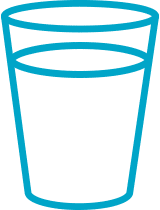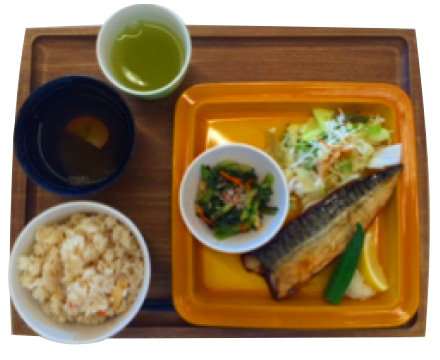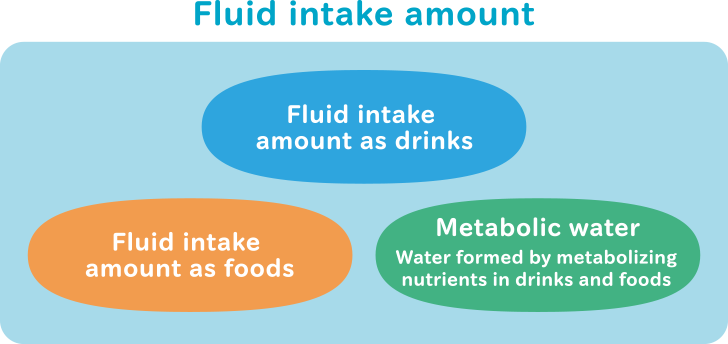
![]()
To understand the characteristics of fluid intake by Japanese people (age, sex, regional differences)
We believe that the most significant thing about water for humans is not that it makes up two thirds of the body but that it flows into every corner and every cell of the body. The smoothness of this flow of body water appears to have a major effect on human health.
We intend to investigate fluid intake amount of the Japanese people as one approach to the verification of this hypothesis. We will conduct a research over the internet to ask a large number of ordinary people how much and what kinds of food and drink they consume, and accumulate basic data on fluid intake by calculating the total amount of water in the material consumed. We will also perform intervention studies in which subjects’ fluid intake amount is managed to identify the adequate amount of fluid intake from a medical perspective based on these results.

In addition to the research on fluid intake amount of the Japanese people, we will attempt to identify the adequate amount of fluid intake based on differences in age, sex, and region from a medical perspective based on these results.
Water taken into the body consists of water obtained by consuming drinks and foods and metabolic water. Water discharged from the body, on the other hand, is not only excreted in urine and feces. Some water evaporates from the skin as sweat and some is contained in expired breaths. Water taken into the body matches the amount of water discharged from the body, and this ensures that the amount of body water is always maintained at a constant level.
The amount of water required to be taken into the body varies depending on age, sex, and region, but there is still no good basis for calculating the amount. In the United States, Canada, and countries in Europe, the amount of water required has been set as “adequate intake”.
- *
Adequate intake (AI): an adequate amount to maintain a constant nutritional state in a defined group of people if no proper scientific basis is available for calculating an estimated average requirement or recommended dietary allowance

http://www.mhlw.go.jp/houdou/2009/05/h0529-1.html
In Japan, however, no studies of fluid intake amount from drinks and foods have yet been published, and no “adequate intake” has been set. In addition, fluid intake amount is affected by the climate and diet of the country, and using the “adequate intake” for the United States or European countries would be problematic.
In particular, fluid intake amount from foods would be expected to be higher in Japan, where rice is the staple food, than in Europe or North America, where bread is the staple food. It is therefore important to develop a Japan-specific method of calculating the amount of water consumed in drinks and foods.
To investigate the amount of fluid consumed in drinks and foods, it is first necessary to perform a study to develop a technique for recording everything consumed without omission and to develop a technique for accurately calculating the amount of water in all material consumed. In addition, a new system is needed to calculate the amount of water generated through metabolic processes from nutrients in all material consumed (metabolic water).


In this theme, we aim to carry out research to find out the adequate fluid intake amount depending on age, sex, and region by constructing a system for the accurate calculation of this fluid intake amount and using this technique for a large scale research on Japanese people.

